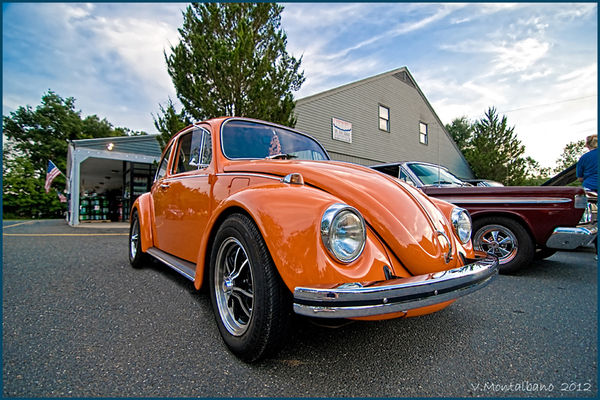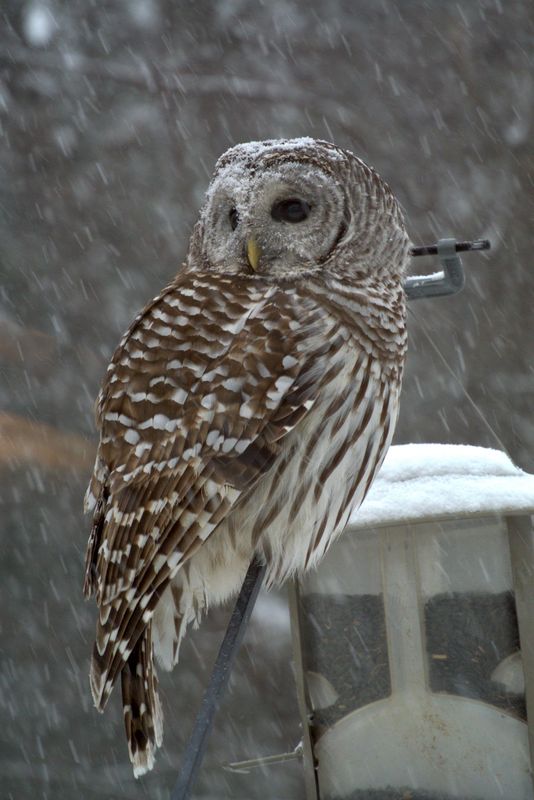digital photography
Feb 12, 2014 08:16:42 #
amehta wrote:
The crop factor is involved in the DoF calculation. :-)
Calculations such as DoF are useful for building intuition and certainly when buying new equipment but I have to wonder whether anyone makes these calculations when taking pictures. Perhaps they do in studio situations, but that is not part of my own world.
My own experience is that I always feel a time pressure in taking photos. I have enough to do just thinking about how to frame the image and set the exposure before the lighting changes or the subject moves. I can't say that the idea ever even entered my mind to pull out a calculator to do a calculation to help decide on what aperture to use.
Feb 12, 2014 09:41:21 #
pecohen wrote:
I can't say that the idea ever even entered my mind to pull out a calculator to do a calculation to help decide on what aperture to use.
You don't really have to do DOF "calculations." But I think you will take more interesting photos if you know what happens to the background (or foreground) when you adjust your aperture. I almost always shoot in Aperture Priority for that reason. No offense but if you don't know how to make use of aperture adjustments and you are shooting only in Program or Auto modes, you are sidestepping just about all the advantages of a DSLR (if, in fact, that is what you use). The below photo is interesting (I think) because I adjusted DOF/aperture to achieve it.

Feb 12, 2014 11:09:04 #
dynaquest1 wrote:
You don't really have to do DOF "calculations... (show quote)
Ditto this^^^ But also remember that aperture setting is only one of the things that determines DOF. You also need to consider closeness to the subject (physically or virtually with a zoom lens) and also the lens choice. Long lenses whether zoom or prime will have shallower DOF, and conversely, wide angle or wide settings will have deeper, greater DOF. Here's an example of using a wide (11-16mm Tokina, f/2.8) lens shot at f/2.8 where I was only inches away from the front bumper. Even after considering my closeness to the subject and shot at the lense widest setting there still is considerable DOF

Feb 15, 2014 11:44:42 #
dynaquest1 wrote:
You don't really have to do DOF "calculations." But I think you will take more interesting photos if you know what happens to the background (or foreground) when you adjust your aperture. it.
No question about it, DOF is important and it's important to know what to expect from you camera and lens. My point was that comes with experience, not with knowing a formula.
I took a picture of a Bard Owl yesterday where the DOF came out about how I wanted, just by opening the aperture as wide as I could while still exposing properly.
Bard Owl in a Snow Storm

Feb 15, 2014 12:30:26 #
pecohen wrote:
No question about it, DOF is important and it's important to know what to expect from you camera and lens. My point was that comes with experience, not with knowing a formula.
I took a picture of a Bard Owl yesterday where the DOF came out about how I wanted, just by opening the aperture as wide as I could while still exposing properly.
I took a picture of a Bard Owl yesterday where the DOF came out about how I wanted, just by opening the aperture as wide as I could while still exposing properly.
Great point and a real nice shot. We've had them in our yard from time to time, and I believe they're also known as the hoot owl. When "in season" we can here them hooting and serenading their love prospects :)
Feb 15, 2014 15:17:31 #
amehta
Loc: Boston
pecohen wrote:
Calculations such as DoF are useful for building i... (show quote)
pecohen wrote:
No question about it, DOF is important and it's important to know what to expect from you camera and lens. My point was that comes with experience, not with knowing a formula.
I took a picture of a Bard Owl yesterday where the DOF came out about how I wanted, just by opening the aperture as wide as I could while still exposing properly.
I took a picture of a Bard Owl yesterday where the DOF came out about how I wanted, just by opening the aperture as wide as I could while still exposing properly.
As I would say with most things in photography (and life), it's a balance. Since DoF depends on 4 factors (sensor size, focal length, distance, and aperture), it is not that easy to just figure it out from experience. Having some understanding of how each of these affects DoF can help. Then going out and shooting, to ground those differences in real photos is important, especially some something as explicitly fuzzy as DoF.
I agree that there often isn't time to worry about doing the calculations when shooting, but that's exactly why studying the topic at home without the time pressure can be useful. It could be as simple as making a table for one lens, let's say an 18-135mm kit lens. Pick three focal lengths (18, 70, 135mm) and three apertures (f/4, f/8, f/16), and two distances (6ft, 20ft). A DoF table (DOFMaster link) lets you specify your camera (sensor) and a distance to get a table to pull those numbers from. This would give a sense of how DoF changes for the different settings, which can be quickly used "in the field".
If you want to reply, then register here. Registration is free and your account is created instantly, so you can post right away.


